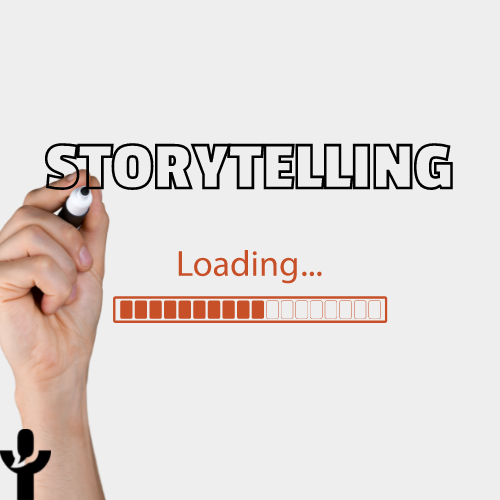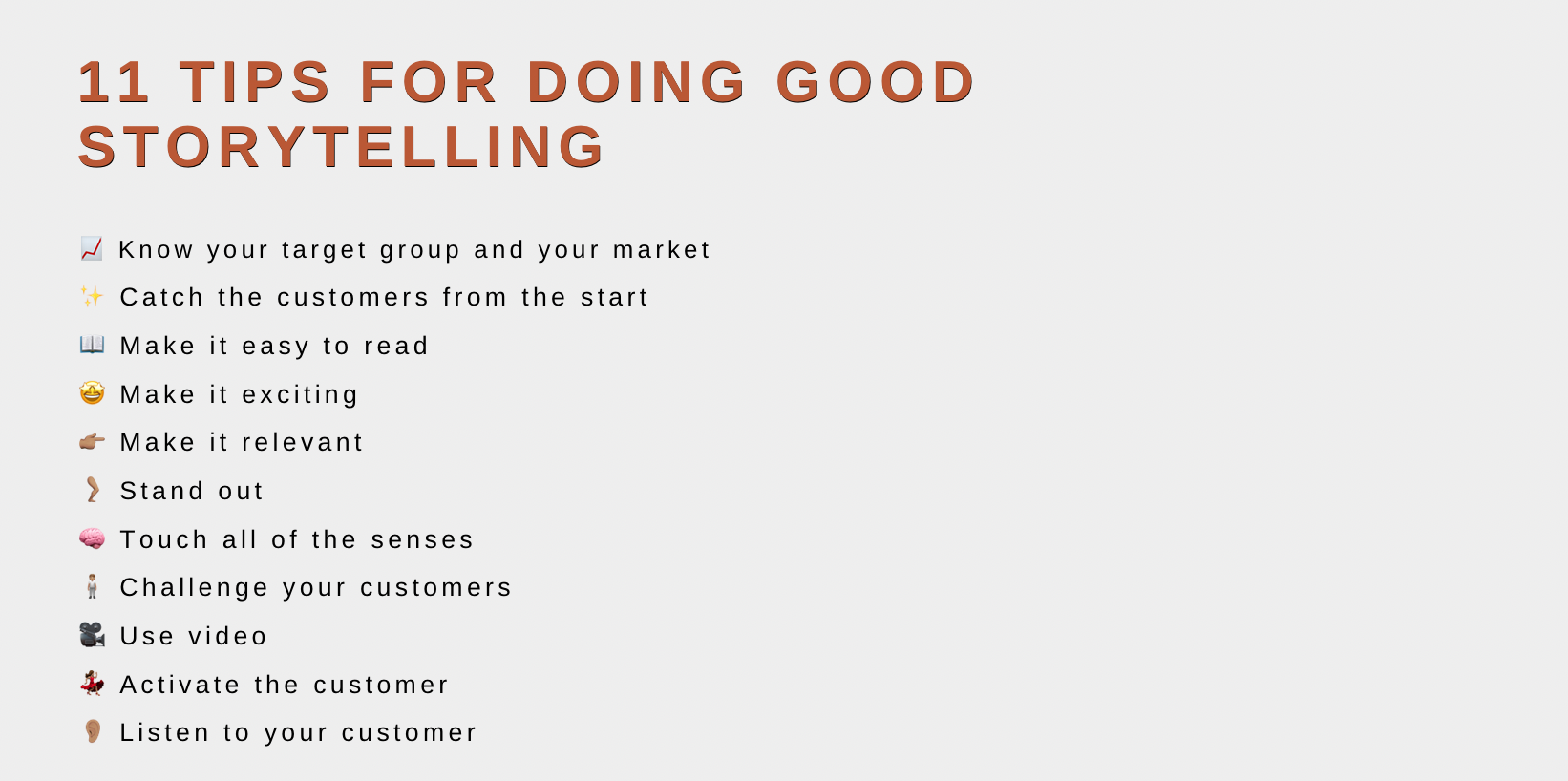What is storytelling?
Storytelling, if said simply, is a telling of a story. More specifically is Storytelling a method by which branding, advertising and other forms of marketing are formulated through structures that have traditionally been used within the world of fiction.
Stories engage us as human beings, they speak to our emotions - that is, our feelings and experiences. A good story should be relatable and engaging. We should, to some extent, see ourselves in it and be dragged in it and be excited to see where it all ends. The goal with storytelling is to create empathy and relatability between user and brand.
Why use storytelling?
Let us rephrase the question to what you’re most likely actually sitting with and most probably thinking: “How can Storytelling help me with selling my brand?”
To answer that, we first need to look at what it is that makes us choose one brand over another. Are these hard, cold facts that control the show - or is it soft feelings and sensations?
Bran research in the subject has found that it is for the most part our emotions and experiences that determine our choice of brand. Admittedly, the rational, objective part of the brain also has something to say, but in the end it is more emotional and subjective experiences that we choose from.
As you can already figure out, this means that storytelling - the story - is an obvious opportunity to engage your users. Cheaper prices, statistics and promises of high quality are undoubtedly necessary, especially in the short term. But to create a strong brand and to hold on to consumers, it is the most important that they will create a relation with what you are selling - that they create a relation with the brand and return to it. So the most important thing is that your users (as weird as it sounds) can see themselves in your product. This is where storytelling can make the difference because its goal is to convey your brand through related stories.
At the same time, storytelling also prevents your marketing from working for “sellers”. We hate commercials - it’s that simple. We hate to be interrupted in what we do because someone will try to sell us something. This is where storytelling can be of great help, because it prevents your advertisements and marketing from giving the impression of being advertisements - if the storytelling is in order, your users will not get the impression of being exposed to advertisements, but to experience a narrative.
How do you do good Storytelling?
Know your target group and your market
The most important of all, is that you know who we - your audience - are, and that you understand what we wish for, how we speak, and what we typically find interesting. You cannot make the perfect story for grandparents if you make products for teenage girls. Therefore, do a really thorough market research before you start.
Catch the customers from the start
Even the most accomplished ending is completely indifferent if no one ever reaches it. Therefore, it is absolutely critical that you from the first glance have our attention. We are busy and we lose attention quickly, if we feel like our time is being wasted. Just think about how many people get upset over articles they have never read because they have only read the headline and then dropped the rest. Thus, it is also important that you give us a good overall impression from the start, and preferably lay out the most important.
Make it easy to read
Keep it short. It works.
Make it exciting
To keep us on your website while we are visiting, it is so important that we always have the urge to keep on reading - that we want to see what the next subpage has to say and what the next video is about. The way you should do it is by creating an exciting story. There are plenty of dramatic structures that explain how you can create one, and all of them are more or less usable, so find one that appeals to you and take it as a starting point.
There are several more simple grips that you can keep in mind when doing storytelling - the use of first- and second - person helps to engage with the reader. The usage of humor, cliffhangers and relatable main characters can all be ways to create a vivid and captivating narrative.
Make it relevant
We don’t have much time to give and we rarely want to engage with something that has no relevance to us. Hence think about the following: What is relevant for my users? What speaks into their space of experience? What speaks to their worldview and what are the things they go and think about in everyday life? What are their dreams? What are they afraid of?
Stand out
The perfect data doesn’t necessarily sell itself - therefore it is important that you shout it from the rooftops, and frame it in a story that makes it exciting and thus easier to remember. It can be that you have some research that shows your product being better than the competitors, but this doesn’t help if people cannot remember that it was you who had the best product.
Touch all of the senses
Play on our senses. Capture both eyes, ears and fingers. When you have done that then we can immerse ourselves right in your brand, and thus we remember it much better afterwards when we return to the dishes. There are many ways to do this - for example, by incorporating video, audio or music.
Challenge your customers
A good story is not only entertaining and exciting - it also challenges its recipients, and can even help change their behavior and outlook on life.
This can also be used for market purposes - from the small things, like getting people to sign up for your company’s newsletter and follow you on social media, to the big ones, where people actually change their spending habits and throw themselves over products that they otherwise would never have been interested in.
Use video
The video format is being used more than ever before and it is only getting more and more prominent as time goes on. We watch more and more and more videos and we get more and more of our knowledge and experience through them. Therefore, use video as an active part of your storytelling.
Activate the customer
The best way to catch us and to engage us with the brand is to get us out of our roles of being passive recipients, and instead make us active participants. Some classic and effective ways to do this are, for example, using games or quizzes.
Listen to your customer
Other than that, it is also important that you show us that you are listening to our input and understand when we have problems with your product. Us, your customers, will be much more engaged with your brand if we get the impression that we (in one sense or another) are a part of it and that we have our own influence on it.
This was all for this time. We, from Storytelling Media, hope that you can use some of our tips and recommendations and that you are ready to go out there and tell them your company’s story!


